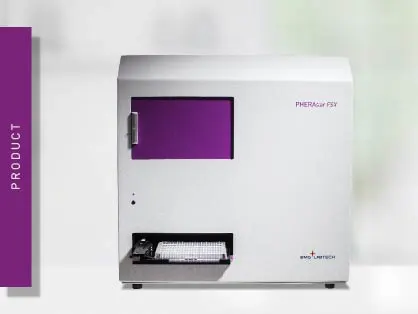
PHERAstar FSX
Powerful and most sensitive HTS plate reader
Luminescence assays come in many different types.
 Dr EJ Dell
Dr EJ Dell
Basically luminescence assays are a chemical or enzymatic reaction that uses a substrate. When the substrate is acted upon by the chemical or enzymatic reaction, light is given off as a by-product. The two main types of luminescence reactions are Flash and Glow. The Flash luminescence reaction occurs quickly, in a matter of seconds or minutes, giving off a very bright signal. Whereas Glow luminescence assays can last for hours but they are not as bright as Flash luminescence assays.
An example of the Flash luminescence assay is DLR® from Promega:
An example of a Glow luminescence assays is the ADP-Glo® Kinase assay from Promega:
Powerful and most sensitive HTS plate reader
Most flexible Plate Reader for Assay Development
Upgradeable single and multi-mode microplate reader series
Flexible microplate reader with simplified workflows
ELISAs are a popular tool to detect or measure biological molecules in the life sciences. Find out how microplate readers can be used to advance research using immunoassays.
LanthaScreen is a TR-FRET technology which can be used to measure kinase activity, compound binding, and post-translation modification events. Read more about this type of assay here.
Although the concept of fluorescence gain has always been hard to grasp, it is a make-or-break parameter in microplate reading. Read here how to adjust it optimally.
HTRF combines time-resolved fluorescence detection with FRET and is mainly used for drug screening in high-throughput. Read more about this measurement approach here.
This article clarifies what integration time is, why it is important and how you can optimise the integration time for TR-FRET measurements.
Dual-reporter assays with stable, long-lived luminescence reporters that emit at different wavelengths offer several advantages for higher-throughput detection. Read more here.